CricViz analysis: England’s ODI fast bowlers – the battle for a World Cup spot
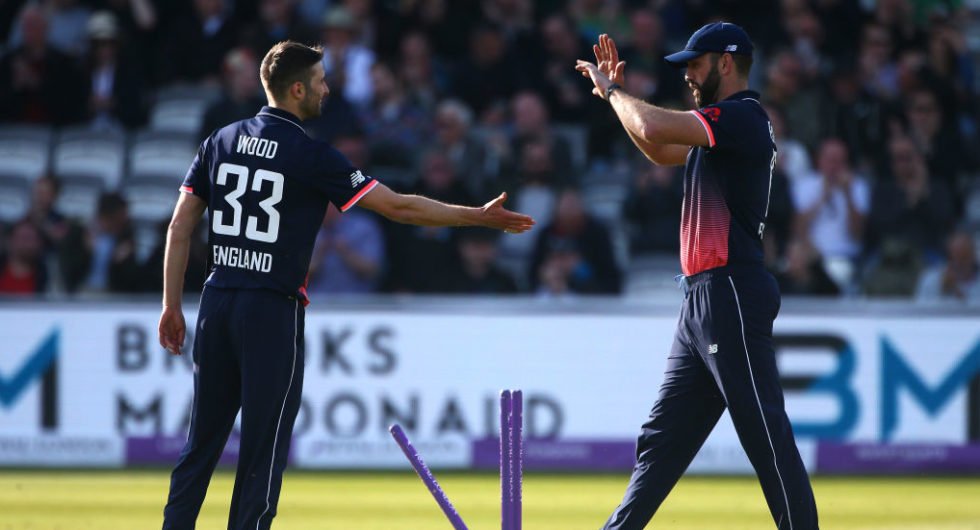
Ahead of the West Indies-England ODI series in a vital World Cup year, CricViz analyst Freddie Wilde assesses England’s pace bowling options in ODIs.
With 99 days to go until the World Cup, England’s batsmen and spinners are locked in. Alex Hales looks set to be the reserve batsman with Jason Roy, Jonny Bairstow, Joe Root, Eoin Morgan, Jos Buttler and Ben Stokes forming the top six and Moeen Ali and Adil Rashid as the two spinners.
However, the make-up of the pace attack remains uncertain. With three spots in the starting XI and potentially two back-up spots in the squad up for grabs. The last spot in the 15-man squad is likely to be occupied by a reserve batsman with Joe Denly currently the man in possession but James Vince and Sam Billings also options.
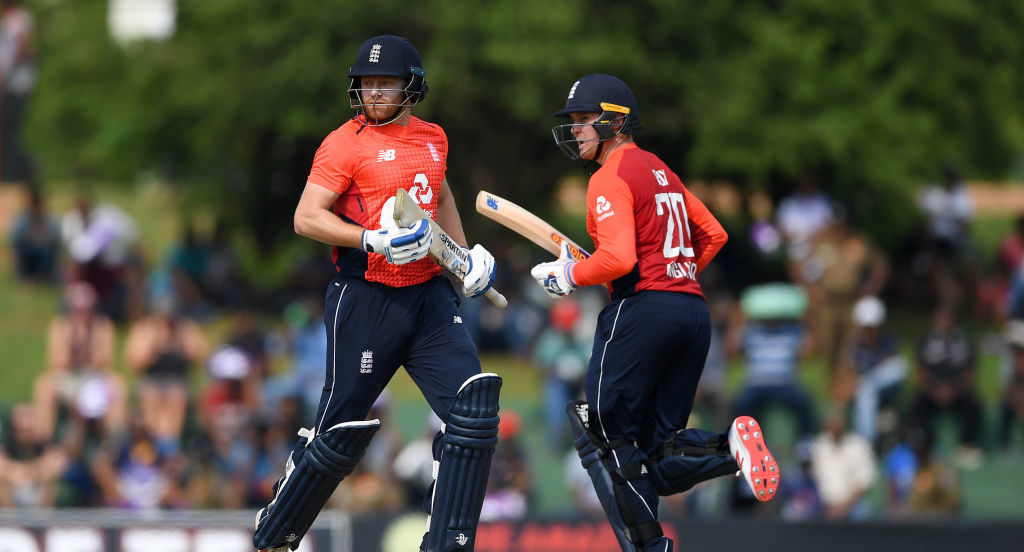
Jonny Bairstow and Jason Roy are likely to open the batting for England at the Cricket World Cup
Between now and the start of the tournament England have five ODIs against the Windies, one against Ireland, five against Pakistan and two World Cup warm-up matches. Here we summarise their pace bowling options with analysis featuring Match Impact – an analytical tool used by England’s management in white-ball cricket.
Chris Woakes
Chris Woakes is the leader of England’s attack and is a certain starter. The Warwickshire bowler is an exceptional bowler in the first ten overs of the innings, where since the last World Cup he has the highest average bowling impact of any pace bowler in the world of +10.8 runs per match.
Woakes’ brilliance in the phase combines a low economy rate of 4.23 with a low strike rate of 32.3-, something which is built on his accuracy – 67 per cent of his balls in the first ten overs are in the channel outside off stump – which is the third best in the world. Since the last World Cup England have utilised Woakes’ new ball strength well: he has bowled 50 per cent of his overs in the phase.
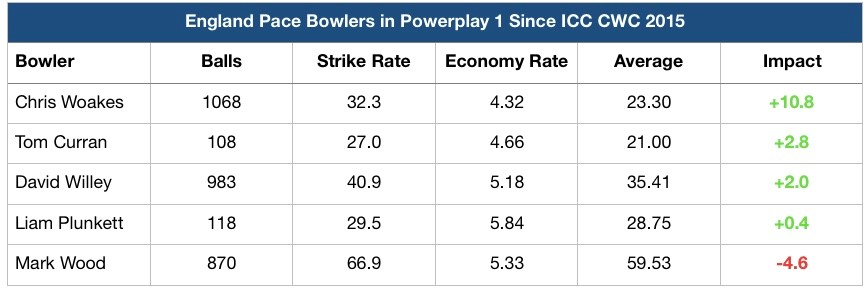
Woakes is less effective in the middle and death overs where he bowls the remainder of his overs. The fast bowler possesses good defensive skills with an effective slower ball and a comparatively effective yorker but he has struggled to keep a lid on the scoring rate – his economy rate of 7.45 is comparatively high. However, notably his True Economy Rate – which compares his performance to the expected economy rate in the overs he has bowled – is -0.25, suggesting he is performing above expectation in the phase.
The fact that a half-fit Woakes was not risked for England’s three Tests against the Windies is indicative of his importance to the ODI team.
Liam Plunkett
Liam Plunkett is almost certain to start alongside Woakes, despite a slight downturn in his performances last year. While Woakes has become a master of the first Powerplay, Plunkett has in turn become a master of the second Powerplay. Since the last World Cup, among those who have bowled more than 750 balls in the middle overs, only three pace bowlers have a higher average bowling impact in the phase than Plunkett’s +3.11 runs per match. As with Woakes, England have utilised Plunkett well, allowing him to bowl 75 per cent of his overs in the middle phase.
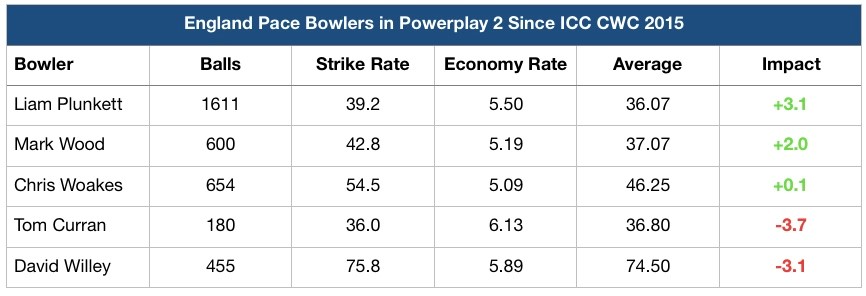
Plunkett’s impact in the middle overs is based largely on his wicket-taking prowess – since the World Cup he is one of only seven pace bowlers to have a strike rate of less than 40 in the phase. Plunkett’s success is built on a method that sees him bowl largely on a good length and shorter and bowling a high number of cross-seam deliveries. This method is well-suited to the middle overs but it is fairly dependent on him maintaining good speeds and in the last two years his speeds have been dropping.
Plunkett very rarely bowls in the first Powerplay and his remaining overs are typically bowled at the start of the third Powerplay where his impact of +3.2 is excellent. Whether his natural back-of-a-length delivery can work so well in the later death overs when batsmen are attacking every ball is uncertain but it could be worth England trying him in the latter stages a little more often.

David Willey
Since the last World Cup, David Willey is the third most-capped of England’s pace bowling options with 41 matches, behind Woakes and Plunkett who have both played 44. This is reflective of his level of performance where his average bowling impact of +0.4 runs per match ranks him as England’s third most effective pace bowler in this period. As England’s only left-arm option it is likely that Willey will make the 15-man squad but his relatively mixed record at ODI level makes him far from a certain starter.
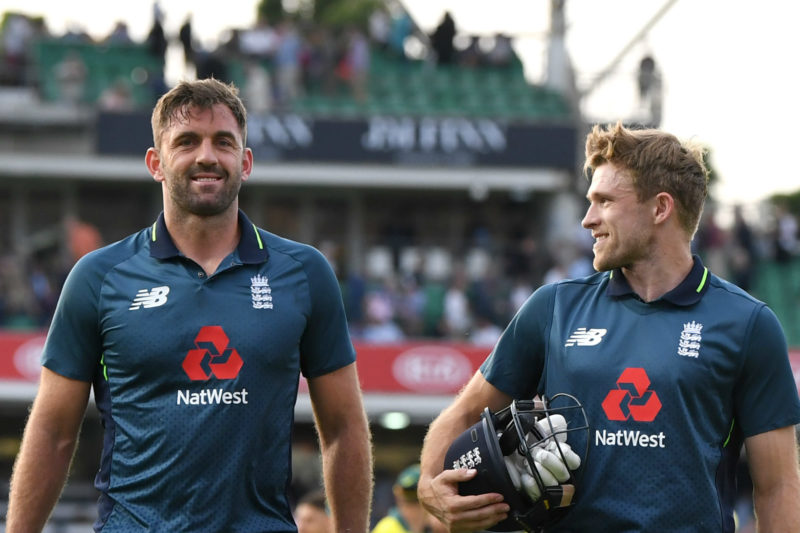
Nasser Hussain believes Jofra Archer’s presence has put pressure on Liam Plunkett and David Willey
With Plunkett a middle-over specialist, the third seamer will take the new ball with Woakes – something Willey has done in all of his 41 ODIs. Willey has a solid record in the first Powerplay where he combines an economy rate of 5.18 with a healthy strike rate of 40.1.
Willey is clearly at his most effective when the ball is swinging. Analysis of ball-tracking data shows his average drops by more than half when the ball swings more than 2.25°. Willey is an excellent pick in conditions where the ball is likely to swing.

Willey is perhaps unfairly pigeon-holed as a new-ball bowler. His match impact of +1.8 in the death overs is the third best of England’s options. His economy rate in the phase of 6.85 is excellent and offers reason for encouragement that he could do a job in the period.
At Willey’s pace, though, his margin for error when the ball isn’t swinging is small, but last year he showed notable improvement in his yorker success rate in the death overs and returned excellent figures in the phase.

Mark Wood
Mark Wood’s overall ODI record is poor: 35 wickets in 34 matches at an average of 48.50. More specifically, his record in the first Powerplay, where he has only taken 13 wickets in 35 matches is woeful. It is indicative both of England’s scarcity of options, but also his potential upsides, that he remains in consideration.
Wood offers England the most precious of skills: pace, and he served a scintillating reminder of that in his most recent Test for England were he bowled the third fastest spell for England since ball-tracking records begin in 2005. With a new, longer run-up, England will be desperate for Wood to bring his red-ball speeds to the ODI arena where his pace could help take flat pitches and unresponsive balls out of the equation.
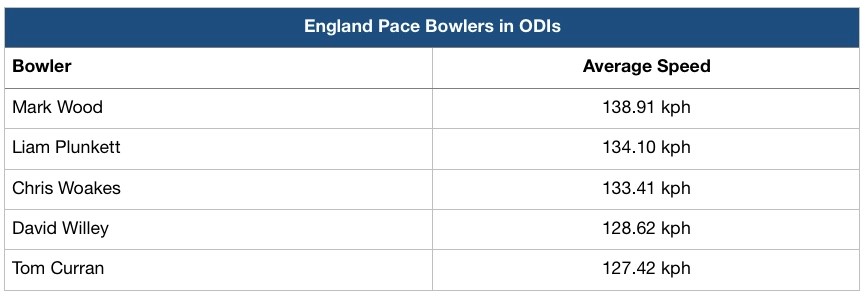
However, there is more to Wood than simply his pace. Although his overall record is poor, he has an excellent record at the death – with an average match impact of +3.7 in the phase. This impact is built on an excellent economy rate of 6.69, which is -0.79 runs per over better than we would expect from a bowler in the overs he has bowled.
Wood’s strike rate at the death is poor but wickets are less valuable in the phase where the emphasis is on run-saving. He is England’s standout death bowler in terms of Match Impact since the last World Cup.
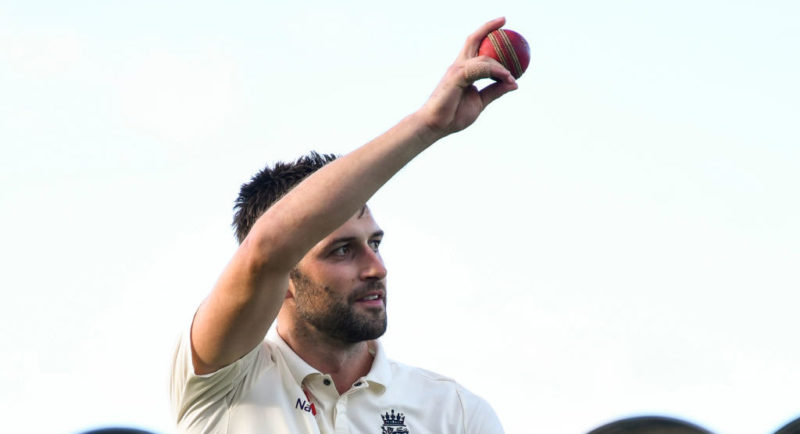
Mark Wood walks off the field after taking five wickets against West Indies in St Lucia
That said, with Tom Curran coming off the back of an impressive Big Bash League season, Jofra Archer soon to be eligible and Ben Stokes capable of playing an enforcer role when required, Wood’s poor overall record cannot be ignored for much longer. His exploits in the Test in St Lucia will buy him some patience but unless he can put in some consistent performances he will struggle to secure a starting spot and may be in danger of missing out on selection in the squad altogether.
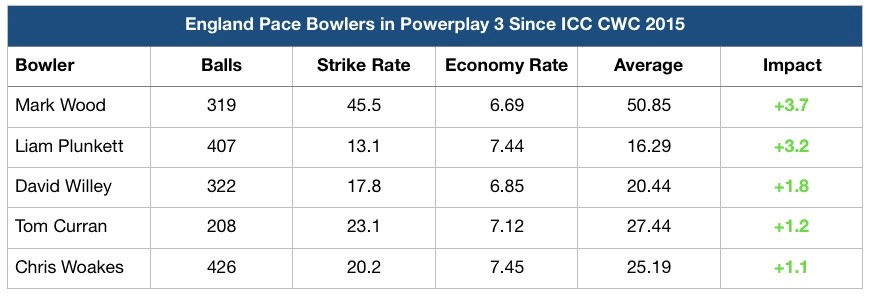
Tom Curran
Having played 11 ODIs, Curran is the least experienced of England’s current pace-bowling options but in the last 12 months he has vaulted above Jake Ball as one of the reserve seamers.
So far across Curran’s ODI career he has made the most impact in the first Powerplay where he has an economy rate of 4.66 and a strike rate of 27.0. However, it is his death bowling that has caught the eye at domestic level in 50-over and T20 cricket and arguably offers him the best way into England’s squad with England lacking a death-overs specialist.
Curran’s assortment of slower balls and effective yorker are the tools required to withstand the onslaught of the last ten overs and it is likely that time will reveal that death overs are his preferred phase. Curran impressed in the recent Big Bash League, taking 20 wickets at an economy rate of 7.95.
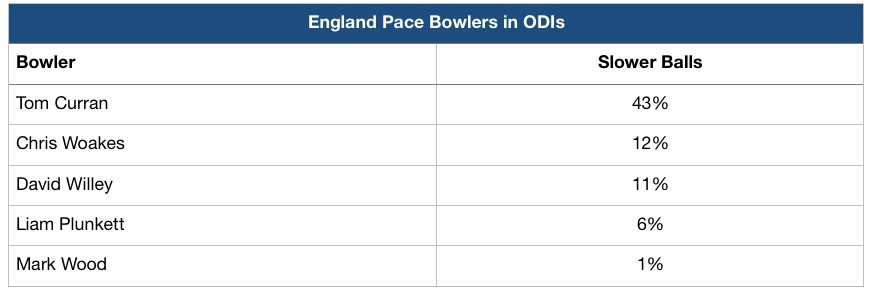
The biggest obstacle to him breaking into the starting XI may well be opportunities: he might only have two or three matches to prove his worth before the tournament.
Jofra Archer
The elephant in the room is of course Jofra Archer. After the ECB adjusted their eligibility rules late last year, Archer will qualify for England in March. Although the Barbados-born bowler has never played at international level, his superb domestic record, proven ability in major T20 leagues and a skill-set that includes high pace, a searing bouncer and pinpoint yorkers means he will be hard to ignore.
England must at the very least give him the opportunity to prove his worth in the series against Ireland and Pakistan, their first engagement after he becomes eligible.
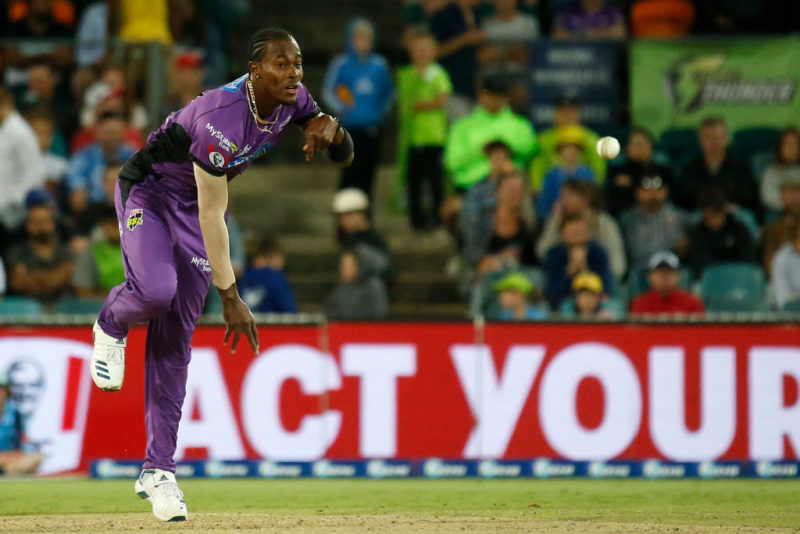
Could Jofra Archer make a bolt for England’s World Cup squad?
The 23-year-old has only played 14 List A matches in his short career but with a strike rate of 34.8 and an economy rate of 5.29 he has performed well. More significant have been his returns in the IPL and BBL, where he has appeared at home playing alongside the world’s best white-ball players. Archer is a proven wicket-taker with the 20th best strike rate in T20 history of 16.7 and a True Economy Rate in the IPL and BBL of -1.09 runs per over in the death overs.
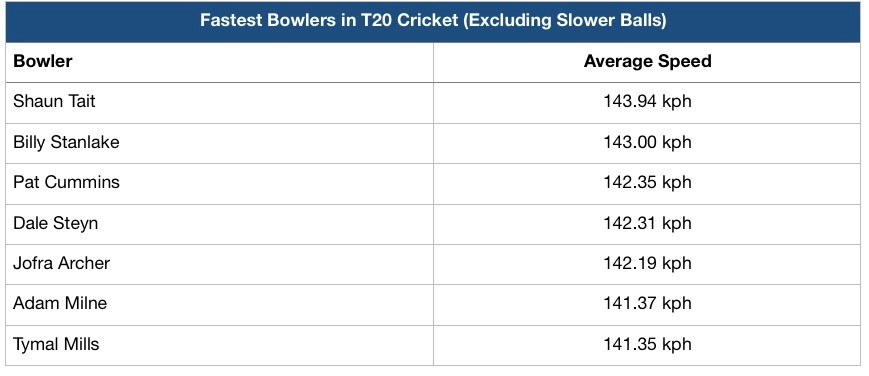
Archer’s brilliance extends beyond the scorecard. With an average speed (excluding slower balls) of 142.19 kph since his T20 debut, Archer is the fifth fastest bowler in the world. Archer has rare raw attributes and is a special talent. He combines the pace of Wood with the variations of Curran and elevates them further.
Of course, England must be wary of placing too much expectation on Archer who remains young and inexperienced, but given England’s struggle to balance their attack it would arguably be more risky for England to ignore him.
Conclusions
Two of England’s five pace bowling spots will certainly go to Woakes and Plunkett, and both men are almost certain to start. That leaves three places in the squad and one in the team, which means one of Willey, Wood, Curran and Archer won’t make the squad and two of them won’t make the team.
Willey – so dangerous when the ball swings, a left-arm option and underrated at the death – is unlikely to miss out on a squad place. Wood’s pace offers great potential and his excellent record at the death is encouraging but he must translate skills into performance. Curran’s abilities, particularly at the death, are exciting but he may struggle to get further opportunities to prove his worth. All the signs are that Archer has the quality to perform at international level but whether he can establish himself in a short window of time and deal with the burden of expectation remains to be seen.
With the batting and spin bowling settled, these next few months will be crucial in determining England’s best ODI bowling attack and, ultimately, their chances of winning a World Cup on home soil.

